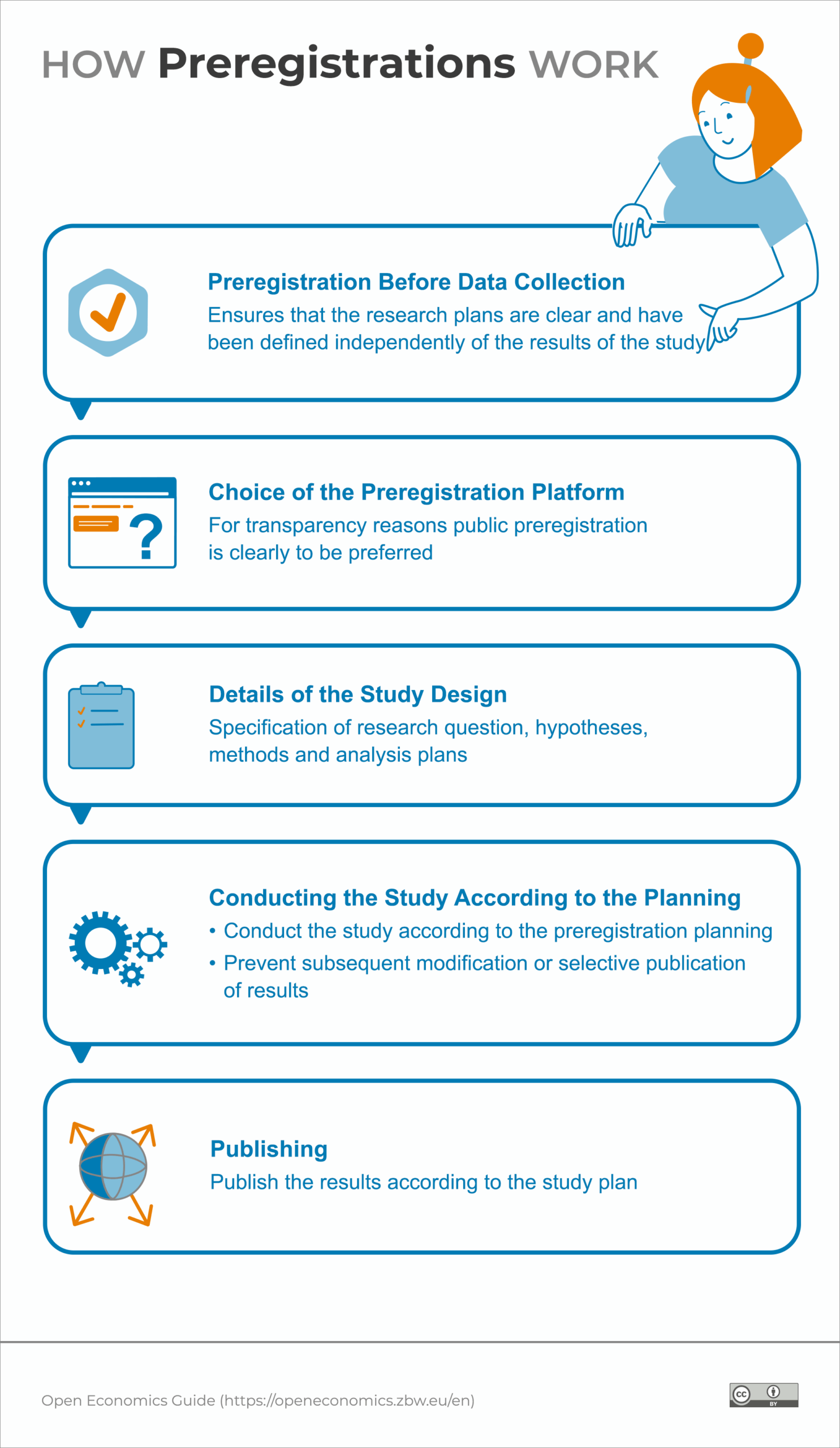How preregistrations work
At the beginning of a study, researchers formulate a research question, formulate hypotheses and draft the study design. In doing so, they also define the scope of the study, the planned methods and analyses, and other relevant aspects.
Before data collection begins a preregistration should take place. This ensures that the research plans are clear and have been defined independently of the results of the study. Aspects that will not be available until later can, however, be additionally registered by researchers during the ongoing study.
For preregistration, researchers best register their study plans on an appropriate platform such as AsPredicted or the Open Science Framework (OSF). Although preregistration can take place either as an exclusively internal or private "local preregistration" or as a public preregistration on a platform, for transparency reasons the latter is clearly to be preferred. During preregistration, researchers provide detailed information about their research project, including the research question, hypotheses, methods, and analysis plans. OSF provides pre-written documents for preregistration. At AsPredicted researchers must answer nine questions about the proposed research design and their analyses to preregister a study.
A DOI can also be assigned for a preregistration. After preregistration, the study design is publicly available. Other researchers or interested members of the public can view, review, or comment on it. Afterwards, researchers conduct the study according to the planning. This prevents subsequent modification or selective publication of results. Once the results are available, they can then be reviewed or replicated according to the study plan.
